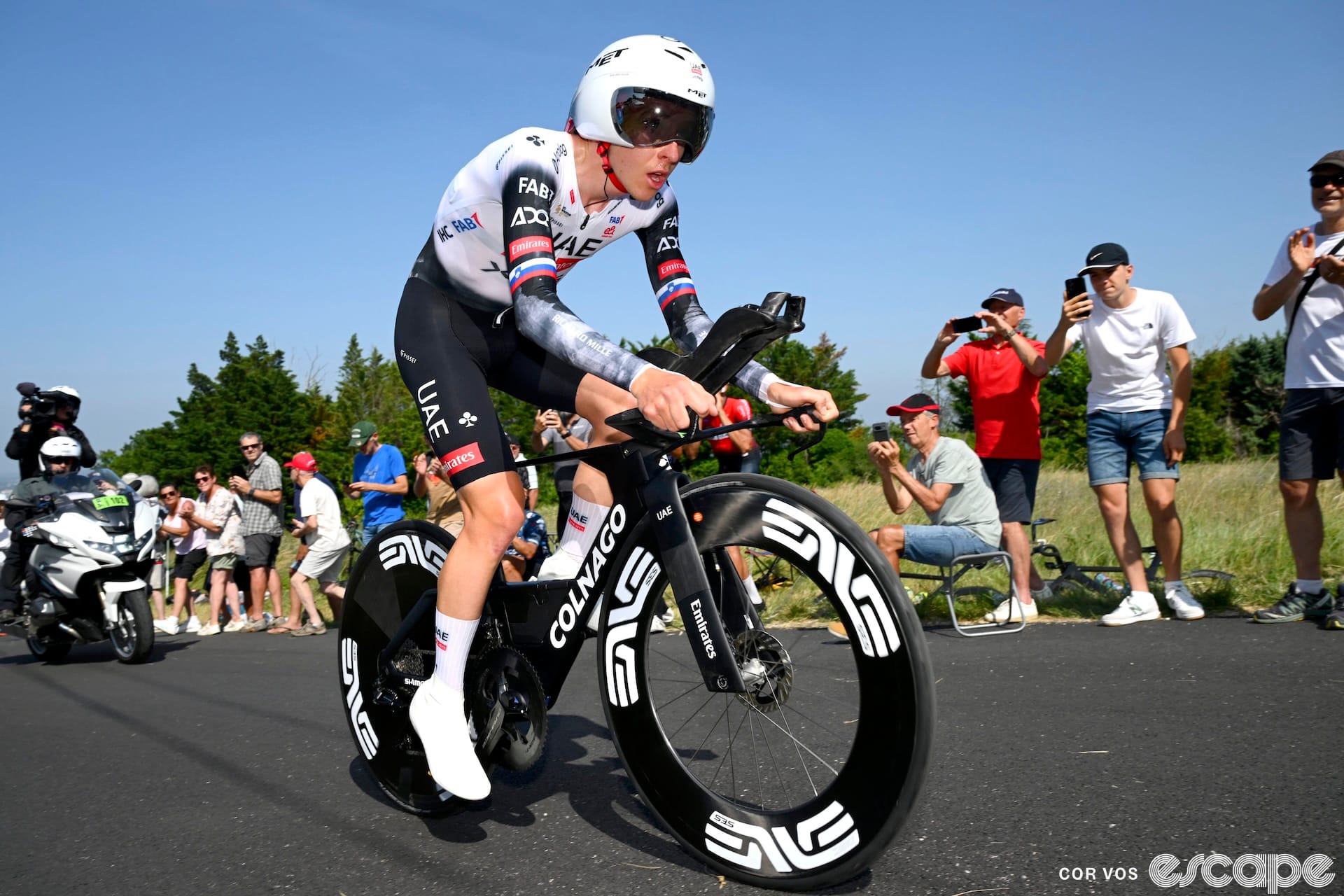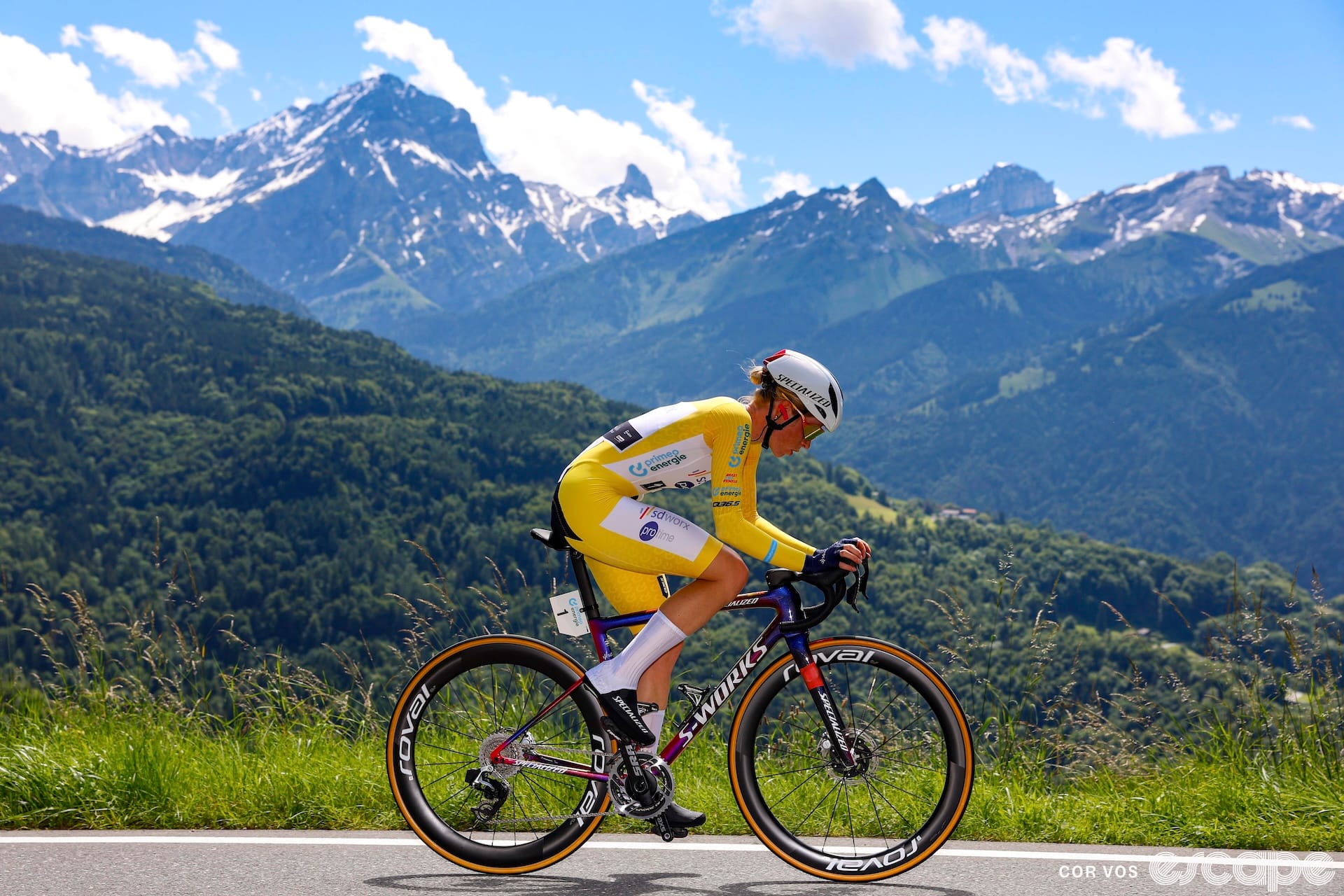In the first instalment of 'An Introductory Guide to Power,' we compared the differences between each type of power meter. Now that you know which meter is right for your needs and budget, the next step is understanding how to use it effectively. Whether you are getting set for a season of indoor training or heading out on the road, testing your ability is the first step in making your data useful.
Much like most things in the cycling world, the sports science community is split on the best power testing method. With help from Neal Henderson, founder of Apex Coaching and the creator of Wahoo’s 4DP test, we aim to unpack the science of power testing.
What is meant by power testing?
As we will cover in another instalment of ‘An introductory guide to power,’ understanding your training zones is crucial to training with power. To set these zones, you first need to capture your fitness. This is done through a power test. The most commonly used metric is functional threshold power (FTP); calculating this allows you to apply some general percentages to this value, which allows you to set your power zones.
Power testing is a broad topic that extends far beyond FTP testing. Henderson is an advocate of testing at durations that are relevant to your goals. For example, testing your FTP alone will reveal very little regarding your progress if you want to increase your anaerobic capacity, a far higher intensity. Mapping your abilities across a range of durations can be most insightful, Henderson suggests something similar to the 4DP test he devised for Wahoo’s SYSTM training platform. This method uses “two five-second all-out efforts, a five-minute maximum effort, a 20-minute maximum effort, and ends with a one-minute all-out effort.”
If you are new to riding with power it can be beneficial to collect data by riding as you normally would without paying too much attention to the numbers. This way when you perform a power test you will have a rough idea of the numbers you can expect to achieve for each duration and how to pace an effort at your limit.
What is FTP?
As soon as you start looking into the world of power training you will almost instantly be met with the term FTP, the power you can sustain for roughly one hour… even if its absolute definition is open to debate. There are plenty of flaws with using FTP as a guiding metric of your complete cycling ability but it does give a fairly good insight into your aerobic capabilities. FTP is commonly interchanged with the term threshold however this shorthand is only partially accurate.
The term 'Threshold' in sports science circles refers to your body’s lactate threshold rather than your FTP. Lactate threshold is the point at which your body starts to accumulate lactate faster than it processes it and is sometimes referred to as LT2. This marks a transition from a sustainable state to an unsustainable state. Typically, lactate threshold and FTP will occur at a similar intensity however they are not the same and the difference between them can vary from rider to rider.

Riding at your absolute best power for an hour is a hard task with great potential for error. The first consideration is that pacing an all-out effort for an hour takes a lot of practice. Getting this wrong can lead to an incomplete test or finishing with too much left in the tank. Secondly, there are very few places where you can ride full-gas for an hour without being disrupted, unless you’re on an indoor trainer. Although jumping on the indoor trainer might seem like the perfect solution most riders will find that they will see lower power numbers than on the road and an hour of riding at your limit on an indoor trainer would be incredibly mentally taxing.
For this reason, it is always best to test yourself in the environment you will spend most of your time training in. A few different testing protocols simplify the process making it easier to replicate accurately. These then use a reduction percentage to predict your one-hour mean maximal power (FTP).
20-minute test
The most common method used is a 20-minute full-gas effort. This can take place on a climb, a flat section of road, or an indoor trainer. The main consideration when finding somewhere to conduct the test is that you are confident you can ride for the full 20 minutes uninterrupted.
Co-author of ‘Racing and Training with a Power Meter’, Hunter Allen, devised what has become the standardised 20-minute testing protocol. The test captures your maximum sustainable power over 20 minutes. Following the correct warm-up protocol is crucial for the results to be valid. This warm-up consists of riding for 20 minutes at an endurance pace (around 65% of maximum heart rate). At the end of the warm-up complete three one-minute intervals at a cadence above 100 rpm to open up the legs. Between each of these efforts return to your self-selected cadence and endurance intensity. After completing all three efforts, spend another five minutes at an easy endurance pace.
Before getting started with the all-out 20-minute effort the most important step is to carry out a five-minute max effort. The goal is to eliminate the freshness you might feel after just warming up. Completing this five-minute effort lowers the anaerobic contribution to the 20-minute effort making it a more accurate measure of aerobic capacity. This is where most people stumble, Henderson explains.
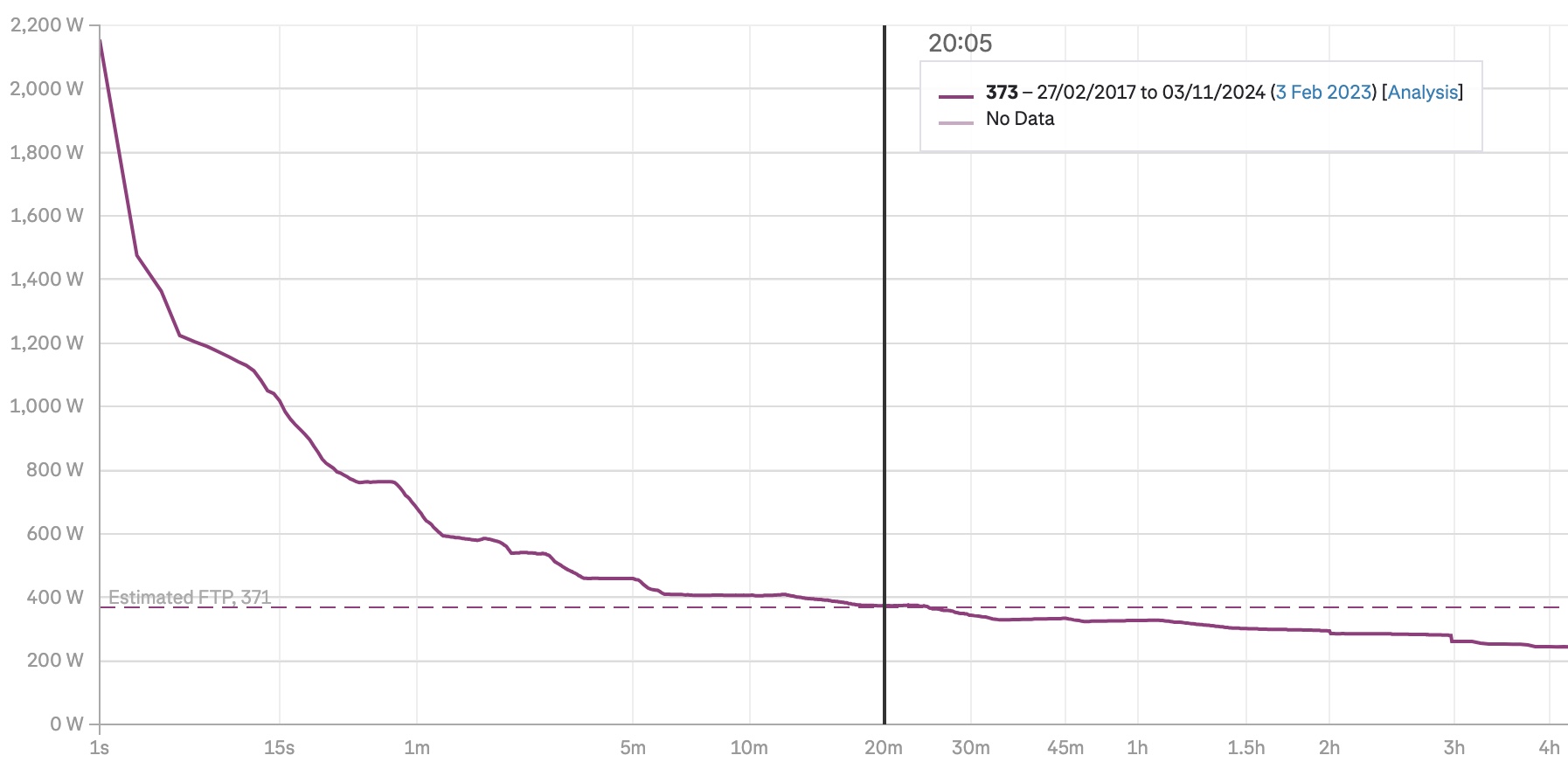
“If you look at the protocol, the thing that people get wrong with the 20-minute test is that there is a five-minute maximal effort before the 20-minute effort in the same session,” he says.” They can use 95% of the 20-minute result [to calculate FTP] only if there is a maximum five-minute effort before that.”
Between the five-minute max effort and the 20-minute test, ride at an easy endurance pace for 10 minutes. At this point, all there is left to do is the test itself. Having a rough idea of what you are aiming for can improve your pacing. By the last minute of the test, you should be just about clinging on to your target power. More than this is a sign you could have given more.
After the test, you might need a few minutes to regain composure before completing the ride with a 10-15 minute cool down at an easy pace.
The 20-minute test aims to produce the highest average watts possible throughout the interval. For this reason, the 20-minute test can be hard to master for riders new to power. It requires a rough understanding of your target power paired with the ability to hold a fixed pace for 20 minutes. It can take a few attempts at the 20-minute test to get it right. Even so, this testing protocol aligns closest with the demands of a full hour at FTP.
Once you have completed a 20-minute test you need to calculate your FTP based on the result. As a rule of thumb multiplying your 20-minute result by 0.95 will give you your FTP value. Of course, this is open to error in itself with the 95% rule an estimation of an athlete's average drop-off from a 20-minute effort to the full hour. Some athletes have a more pronounced drop-off whilst others might be able to ride close to their 20-minute power for the full hour.
“The variation again amongst people is pretty great,” Henderson says. “Some people can greatly exceed their actual FTP for those short durations. If somebody has a relatively high VO2 max and especially a high anaerobic capacity, for that 20-minute test they can exceed their FTP by more than 15%.
“Somebody who has less anaerobic capacity who is more a diesel aerobic engine, in that 20-minute all-out effort, will be pretty close to FTP using 95% of their 20-minute result even without the five minutes prior.”
In recent years, indoor trainers have grown in popularity for power training. The controlled environment makes it perfect for steady-state efforts. On this topic, Henderson advises riders to avoid ERG mode as it can affect the result and hinder their ability to maximise output. It is also important to understand how your performance differs indoors to outdoors as there can be a measured difference in ability.
Ramp test
Until smart trainers popularised the ramp test this method was reserved for sport science labs. Now anyone with a smart trainer can conduct a ramp test. As the name suggests this test incrementally ramps up the intensity until you reach a level that you can no longer ride at. Unlike the 20-minute test that takes a long time to complete, a ramp test can be completed in under half an hour for most athletes and takes considerably less of a toll on your body with only a few minutes spent riding at or above your FTP. For this reason, ramp tests are great to fit into a training block without adjusting your training around it.
Due to the parameters of the test, a ramp test can only be completed on a static bike or indoor trainer as each ramp needs to be accurately controlled. Smart trainer users with access to a virtual training host such as Zwift or Rouvy can easily load up the ramp test workout and get started.
After a warm-up is complete you enter straight into the ramp test. Typically this will start at an intensity that should feel very easy for you. Zwift has the ‘Ramp Test’ that starts at 100 watts and a ‘Ramp Test Lite’ that begins at 50 watts and is better suited to newer riders. From this point, the intensity increases by 20 watts every minute until failure. It is important to remain seated for the entirety of the test and focus on smoothly delivering power to the pedals rather than stamping on them.
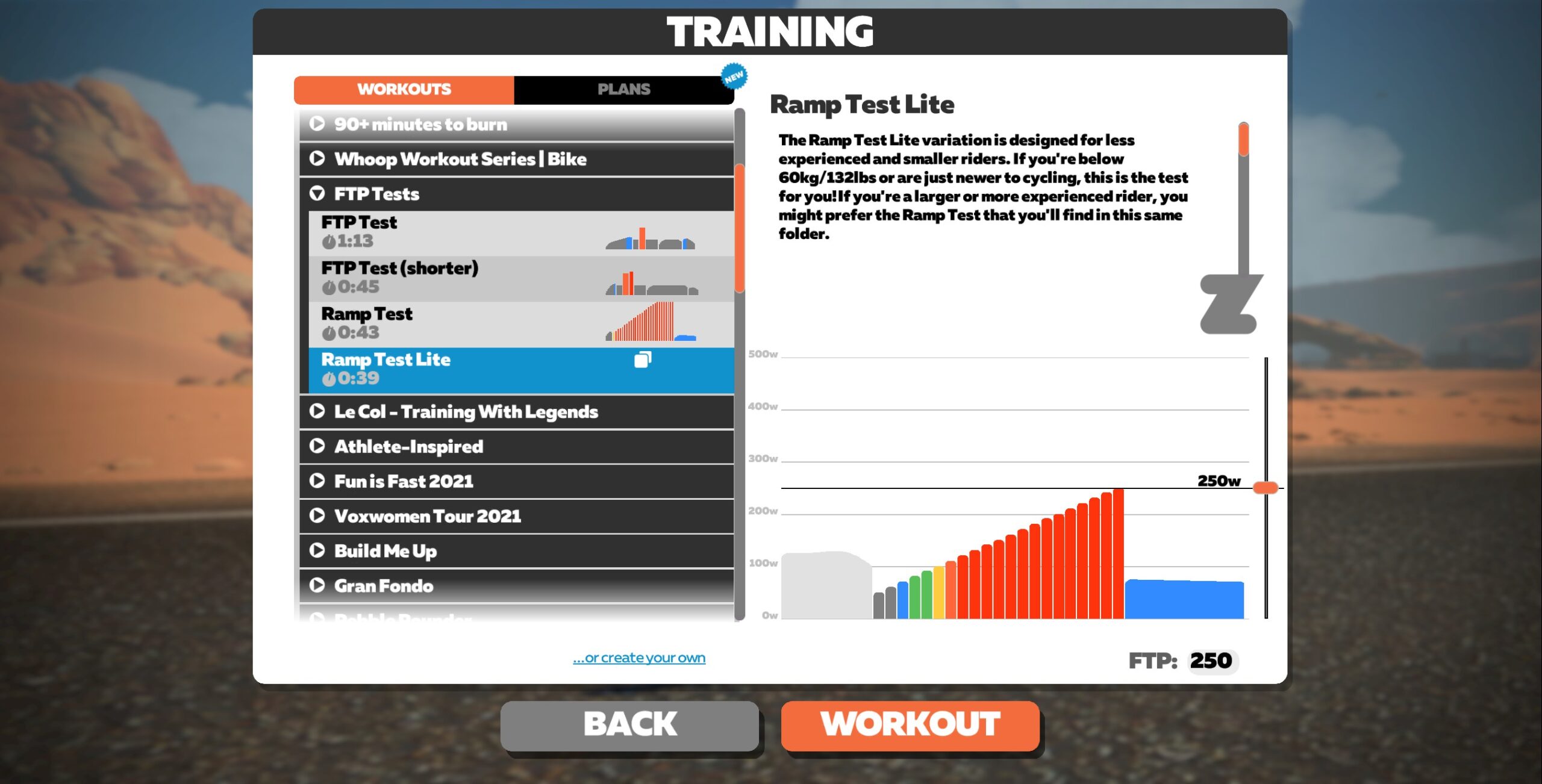
Once you have completed the test and cooled down for 5-10 minutes some platforms will automatically calculate your theoretical FTP value. This is done by taking 80% of your highest one-minute average power. As a result, it is important to keep riding to failure regardless of completing the whole ramp segment.
Although ramp tests are easier to perform than a 20-minute test, they are also open to wider potential error, especially for riders with a high anaerobic ability. This allows them to ride above their threshold power longer than the test accounts for. The effect of this can skew the calculated FTP with a figure that sits above the rider's actual FTP. When this figure is used to derive training zones it can potentially mean that a rider's ‘true’ zone and calculated zone have very little overlap.
“In a 20-minute standard test, the typical thing you need to maintain is motivation for a long period and to push yourself,” Henderson says “So it becomes part psychological evaluation and part physiological evaluation. When you go to a ramp test it makes it a little bit easier especially if you're using a smart trainer and a connected app where it automatically gives you those nice set ramp stages.
“It's not truly hard until the last several minutes, but to say that everyone achieves FTP at 80% of the peak one minute of a ramp test is a large leap of faith. I would give that at best plus or minus 10%.
2x8minute tests
A less common testing method than the two above is the 2x8-minute test. The eight-minute test provides a slightly fuller picture of the rider's ability. At minutes in length, each interval sits right at the top of a rider's VO2max allowing for some level of fatigue resistance to be mapped when comparing the two intervals. With two identical efforts separated by a 10-minute recovery, the difference between the two results highlights how much fatigue and its impact the first interval has on the second. Similarly to the two tests above, a reduction factor of 0.9 needs to be applied to the average wattage from both intervals combined to calculate your FTP. For newer riders, this testing protocol can be easier to implement as it requires less practice to get meaningful data.
The 2x8-minute test can be completed on the road or an indoor trainer. After a 20-minute warm-up at an endurance pace, two harder efforts close to your one-minute max are needed to prepare your legs for what is to come. After completing the one-minute maximal efforts spend a further five minutes riding at an easy endurance pace before getting stuck into the first of the eight-minute intervals.
The duration and intensity of these intervals are going to make them sting. You should aim to enter the interval with a target power in mind and aim to pace the effort so that you can just about finish the interval. Much like the other protocols, making the effort consistent throughout the entire duration is important.
Once the first interval is complete, recover for 10 minutes riding at a low intensity to prepare yourself for the next effort. After the recovery window, the second interval repeats the first. This will likely be at a reduced power to the first one but you should still be looking to produce the highest possible power for the full interval. Once both intervals are complete, spend 15-20 minutes cooling down and spinning the legs at an easy endurance or active recovery pace.
Along with calculating your FTP, the relationship between your first and second intervals can give further insights into your aerobic ability and fatigue resistance that the other single test protocols can not provide. The limitations of this testing method are similar to the ramp test; a well-trained athlete could anaerobically outperform the test and the 10% reduction factor. This is why the 2x8 minute method is recommended mainly for new riders unlikely to have an anaerobic capacity that would invalidate the results.
The limitations of FTP
This is certainly a topic worthy of its own article. For the time being, it is worth noting that although from the outside FTP can look like the centre of the power training universe it is only one small piece of a larger picture. Cycling performance is an intricate combination of elements that extends well beyond aerobic ability. Fatigue resistance, anaerobic power, sprint repeatability, and sub-maximal endurance all form a complete performance package. If you only train and test your FTP, capturing your full range of ability is impossible.
Testing protocols like Wahoo’s 4DP, critical power, or metabolic profiling are more rounded in their approach. Combining efforts across a range of durations, these methods map your power profile beyond mean maximal aerobic power. Although these tests take longer and are more taxing, they can be used to quantify and measure progress at different training intensities.
If you are new to training with power, it's also worth considering that over the first few months of training and testing, an increase in measured ability is likely. The simple reason is that you will be improving your testing practice. “Often we see improvements based on learning how to pace,” Henderson says.
FTP looks at one area of cycling performance using it to extrapolate your physical ability based on general trends. This does mean that for a lot of riders, using FTP as a foundation will align fairly closely with their actual physiology however, it will not work for everyone. It is also not a full view of what you are capable of. This is why it is important to implement power testing relevant to your training and goals. If you want to improve your VO2 max or anaerobic ceiling, testing at a duration that captures this will be more beneficial for tracking progress. Likewise, repeatability is another overlooked element of cycling. It is not only a case of how much power you can produce for any given duration but whether you can repeat it multiple times without a significant fade in ability.
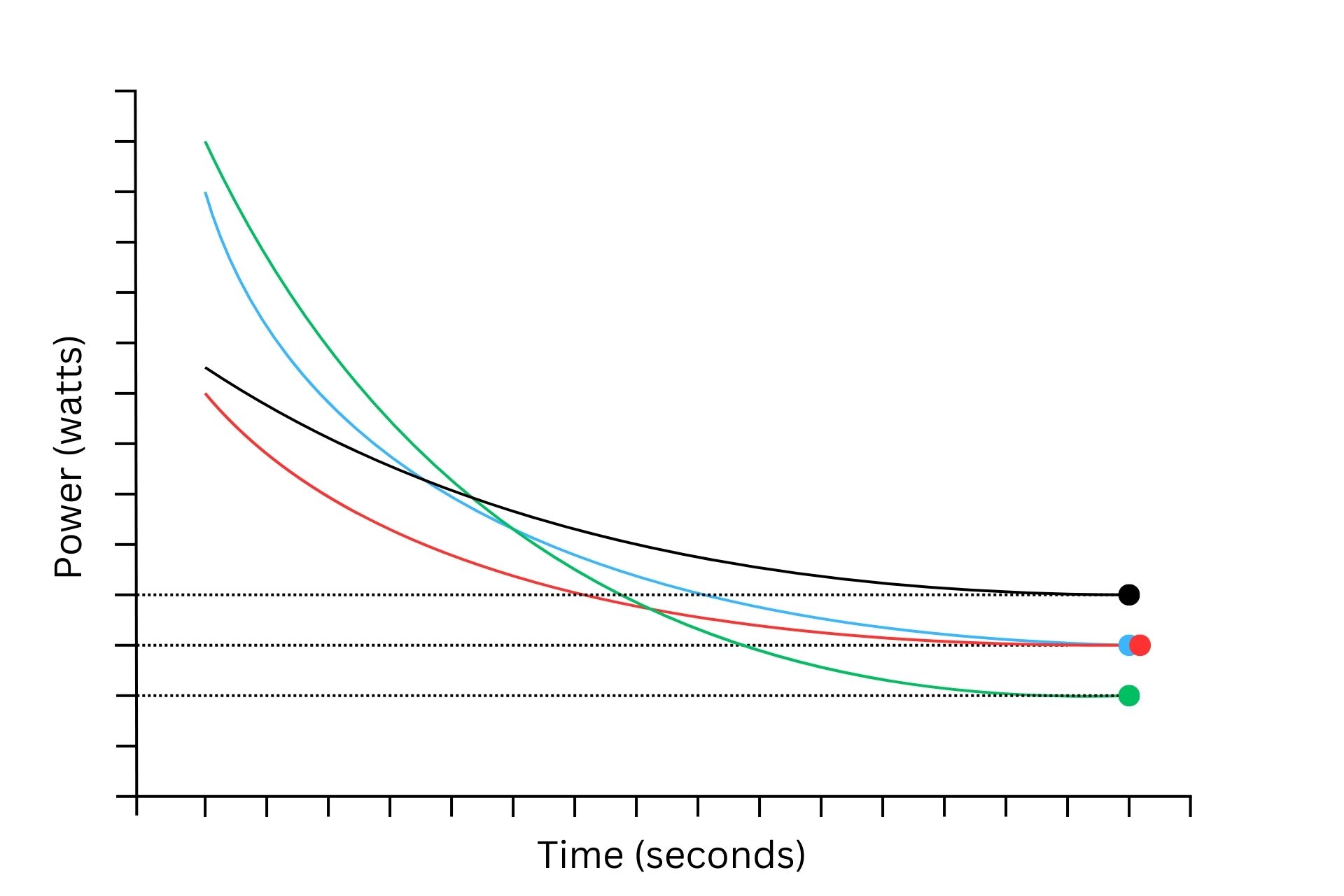
On this front, Henderson advises that you find a testing protocol relevant to your goals and stick with it. This might mean using a few different testing protocols within your training but he stresses, “Conclusions are only meaningful if you're comparing the same type of test to itself. Don't compare the results you get from one test method to another. That's not useful.
If you did a ramp test and then in eight weeks you do a 20-minute all-out effort. Each one of those is telling you something different. It's useful information when you compare like for like. Each one of those test protocols becomes its own data point.”
Testing beyond FTP
Depending on your cycling goals, improving your FTP might not be that beneficial. Suppose you are looking to improve your sprint repeatability for crit racing, your three-minute power for short punchy climbs, or your ability over 10 minutes – training in a way that specifically targets increasing your aerobic capacity will yield poor results. This is where power profiling is more beneficial and testing across a range of durations has the upper hand over traditional FTP-only protocols.
“As a coach, I use different tests at different times,” Henderson says. “A lot of times in the early season, I like to do lab tests to see where that baseline is at.” He explains power testing using an analogy, “I often say that a GPS is only useful if it finds where it is in space. Training without having any target with a power meter is like turning on your GPS and going without it finding any satellites.
“The more satellites you get, the more accurate your GPS is. This is the same in terms of testing. Having multiple durations of effort gives you a more accurate way of moving forward with your training and assessing net progress too.”
If you are unsure what the best testing protocols are to capture the elements of your cycling performance you are looking to improve, enlisting the help of a professional coach can be incredibly beneficial. Unless you are looking to compete in 25-30-mile time trials, focusing purely on increasing your FTP is not the most effective way to improve on the bike. Shifting your focus to other areas of cycling performance will likely yield far more improvement.
Critical Power
While FTP is a cornerstone of training with power it only provides a snapshot of your aerobic capabilities. If you want to map out a more rounded image of your ability across a spread of durations, critical power testing can be a more useful testing protocol. Instead of using a single data point to extrapolate zones, critical power testing uses multiple data points to form a power curve that follows a hyperbolic trend.
Critical power testing requires athletes to complete a series of maximal efforts at different durations much like with the 4DP test devised by Henderson. For a critical power test, the durations are typically three minutes and 12 minutes, but adding a third test duration is recommended by some coaches. "The nice thing about critical power," explains Henderson, "is that it's a simple mathematical calculation from a minimum of two, but realistically three different durations: the maximal output, short, mid and longer-term".
In comparison to traditional single-data-point testing methods, the benefit of critical power is that it provides a clearer view of your strengths and limitations across a range of metabolic systems. This knowledge allows athletes and coaches to tailor training plans to target the correct intensities more accurately. As Henderson points out, "Just because somebody has a high FTP does not mean they have a very high anaerobic capacity." Critical Power testing can pinpoint these discrepancies, allowing coaches to create highly individualised training programmes.
By its very nature, a critical power test captures more data than a traditional FTP test. This means that it is easier to monitor progress in a specific energy system whilst also ensuring that as a result, other areas of performance are not starting to deteriorate. This ongoing assessment ensures your training remains aligned with your goals and helps identify any plateaus or areas requiring adjustment.
Once you have completed your three- and 12-minute maximal power tests the results should be plotted on a graph. You will find that the curve of best fit will naturally tail off like a hyperbolic function. The point at which this curve flattens is regarded as your Critical Power. In theory, this is an effort that your body could sustain without accumulating fatigue in the same way as it would above CP. The calculated value for CP translates to an effort that can be sustained for around 30-40 minutes in reality. In this respect, a calculated value for CP might be close to your FTP but they are different figures and should not be interchanged.
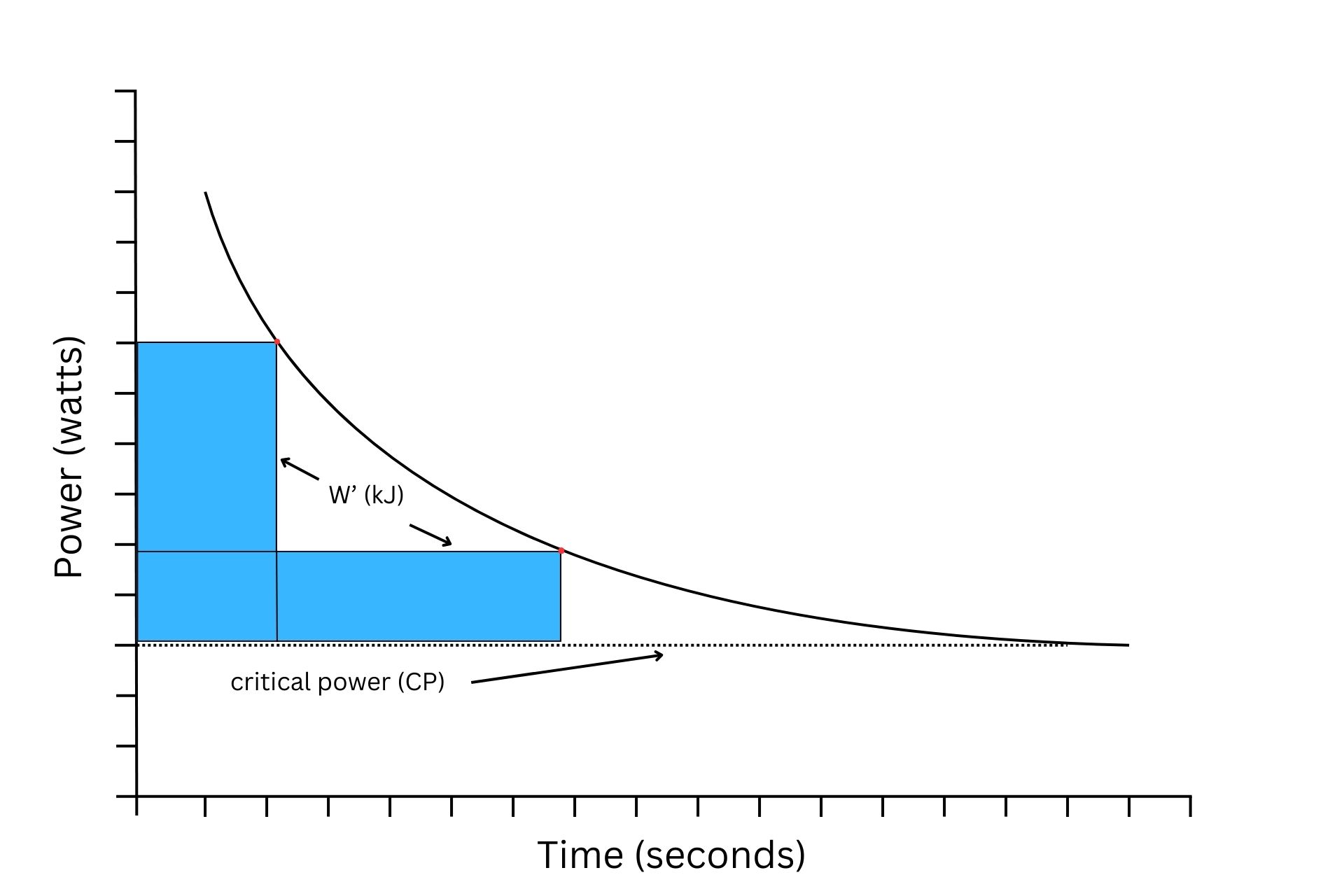
From any point on the curve, creating a box to the y-axis and down to the critical power line provides the area for W’ (pronounced “W prime”). This uses your tested data points to predict your maximum duration at any given output above your critical power value. An athlete’s W’ depends on several factors, including VO2max, and the depletion of intramuscular energy stores. It is also affected by the accumulation of fatigue-related metabolites such as hydrogen and phosphate ions. (Poole et al., 2016).
The typical W’ range for men is between 9-15 kJ and 6-10 kJ for women referring to the work an athlete can do above their critical power before needing to recover at an intensity under CP. Athletes that have a higher-than-average VO2max can achieve higher values than this. Explosive disciplines such as crit racing or mountain biking reward a higher W’ that allows for higher intensity and longer duration efforts above CP. (Vanhatalo et al., 2011).
Although there are many benefits to using CP modelling, the biggest drawback is that it steers away from the standard FTP-based models that almost all training platforms utilise. This means that the data you get from critical power testing is not transferable into the typical seven-zone model introduced by Dr Andy Cogan. To achieve this you would need to use a critical power to FTP approximation converter available online. Based on this figure, this can then be used to set up your zones. In this scenario, it is simpler to use a method that tests for FTP than trying to convert between CP and FTP. Just how accurate this conversion from CP to FTP will vary from person to person.
The other most notable exclusion from the critical power model is that it can only be used to model power above your critical power. That means critical power cannot be used to derive the classic ‘zone 2’ intensity.
What else is out there?
Critical power is the only testing protocol in the list above that is not used to calculate an FTP value. Models that calculate an FTP value and use general percentages of this figure to set training zones are open to compound errors. Firstly there are potential errors in calculating your FTP value. Secondly, these general percentages are not accurate for all riders.
This is where metabolic profiling potentially offers a better solution. This method provides a direct path between test data and training zones. Metabolic profiling utilises a series of seated maximal efforts across a spread of durations to calculate specific training intensities for your goals. For example, if a rider is looking to increase their VO2 max, the test results will provide a power range that will return the best adaptations in training. This method removes the need to calculate a central data point (FTP) that all other intensities are extrapolated.
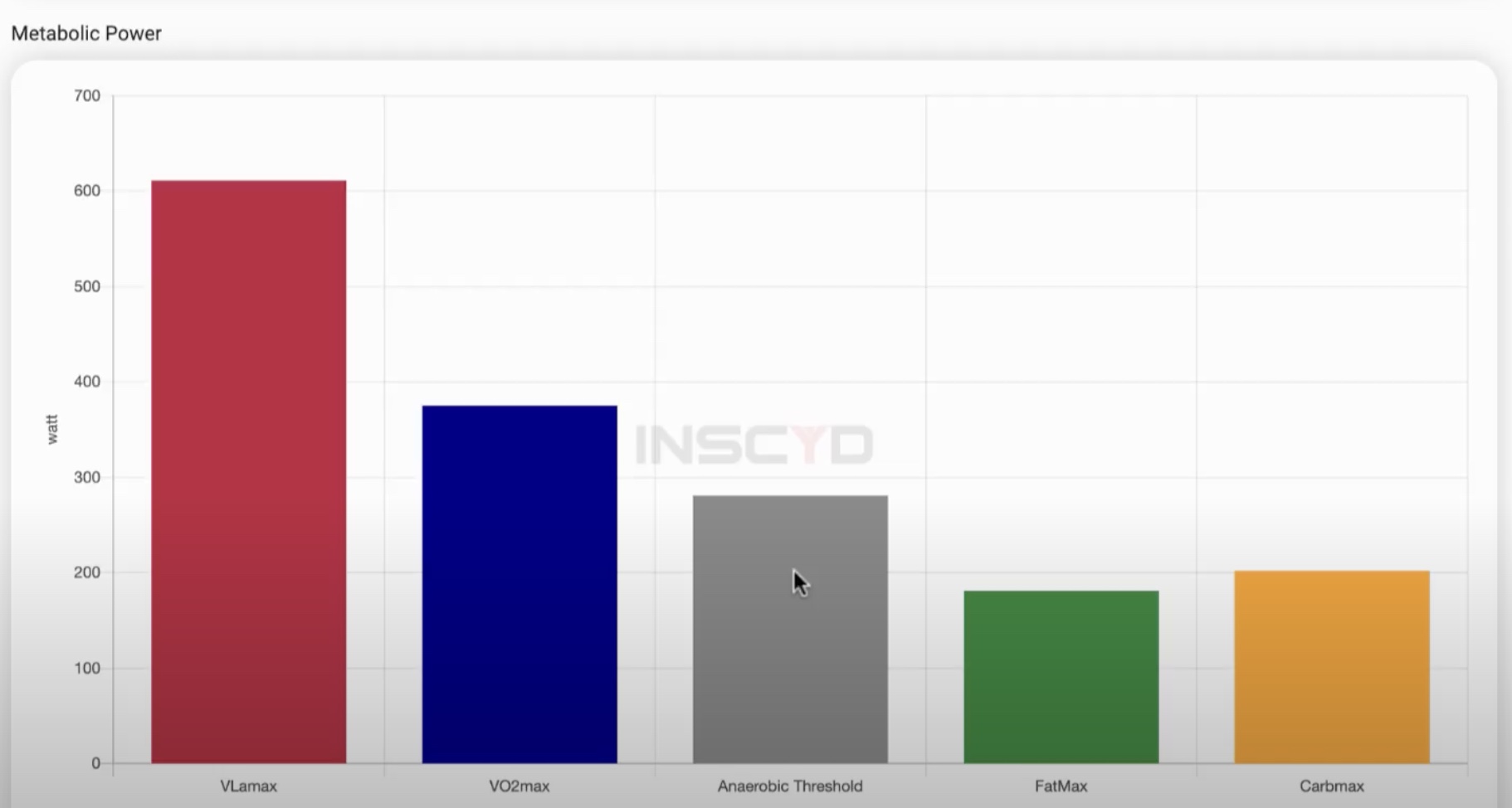
Currently, metabolic profiling is only available via a coach who is signed up to INSCYD, the company that created the protocol and corresponding software. This can be done via the coach finder section on the INSCYD website. This is due to all of the information the software can produce, it takes a fairly high level of sports science knowledge to decipher its findings and how they can be used in a training plan.
Project lead at INSCYD and coach to WorldTour athletes Sebastian Webber explains that metabolic profiling is something that a range of riders can benefit from. “Most typically athletes can benefit if they’re plateauing,” he says. “This is the most common reason and is independent of whether you train five hours per week or 15.” This method is an individualised approach specific to an athlete's unique physiology that tailors training intensities to match the specific demands of an athlete's goals.
We have a full-length story in the pipeline around metabolic testing, what it is and how it differs from conventional power testing and zone training. Keep an eye out for that in the coming weeks.
Conclusion
In reality, there is no one-size-fits-all approach to power testing; your goals, budget, knowledge, and needs will dictate which method is best suited to you. If you want to set your generic power zones, the 20-minute test is the most accurate for the greatest number of riders, so long as the five-minute maximal effort is performed before the test. Newer riders can benefit from using ramp tests or 2x8-minute tests to get a meaningful result without worrying too much about pacing a full 20-minute effort. For those looking for more specific training data, critical power or metabolic profiling is likely to be a better solution so long as you are prepared to invest in understanding how these protocols operate.
Beyond setting your power zones it is a case of matching the testing protocol or developing one for your specific goals. Wahoo’s 4DP protocol goes some way to capture the spread of ability across a range of durations, whilst critical power provides a calculated maximal power figure for efforts above your CP value. For those looking for the testing that provides the most tailored results, metabolic profiling looks to be one step ahead of the rest by creating bespoke goal-oriented training zones.
The biggest takeaway is to always compare apples with apples. It is almost impossible to draw any meaningful conclusions about progress when comparing two different test methods.
In the next instalment of 'An Introductory Guide to Power' we look at what all the power-specific metrics mean, how they are calculated and how they can be used to your advantage.
Did we do a good job with this story?




